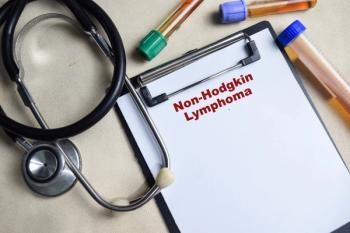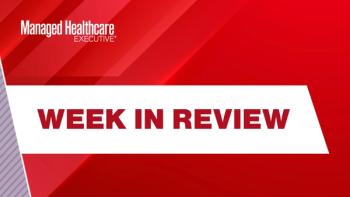
Four health systems develop opioid mitigation programs
Alternatives to opioids programs emerge as viable tools to mitigate the crisis.
The
Four healthcare systems have taken the opioid crisis to heart and developed programs focused on reducing unnecessary opioid prescribing and identifying alternative therapies.
Summit Medical Group
“It is important to recognize how we reached an opioid crisis,” says Laura Balsamini, director of pharmacy services for Summit Medical Group, a physician-owned practice with more than 550 practitioners headquartered in Berkeley Heights, New Jersey. “The road to prescribing opioids by physicians was paved with good intentions. They received encouragement at medical school to be more aggressive about keeping patients comfortable and to not let them suffer. There was not enough training or education about potential risks.”
New Jersey has some of the strictest laws governing the use of opioids. Signed last February, a new law restricts the initial prescription of opioids to five days for those suffering from acute pain. New York, Massachusetts and Maine have enacted laws limiting initial prescriptions to seven days.
The New Jersey law also requires state-regulated health insurers to cover the first four weeks of outpatient and inpatient treatment for opioid addiction without requiring prior authorization and provide up to six months of coverage for treatment.
Finally, the new legislation encourages physicians to use the state prescription monitoring program (PMP) to prevent abuse; record a patient’s medical history, including substance abuse addiction; and discuss potential risks of opioids and alternatives to these drugs, such as Tylenol, NSAIDS, physical therapy, yoga, acupuncture-all of which must by documented in a patient’s electronic health record (EHR).
Summit is leading a campaign to educate physicians on these new state requirements and joining a national campaign to combat the opioid crisis,
Using the state’s PMP;
Educating patients about risk;
Providing alternative treatments;
Establishing an agreement between physicians and patients stating that patients can only receive an opioid prescription from one doctor and no more than two pharmacies; and
Mandating CME every two years on responsible opioid practices; alternatives to opioids for managing and treating pain; and risks and signs of opioid abuse, addiction, and diversion.
“The opioid crisis is a double-edged sword,” Balsamini says. “While addiction has already caused lots of damage, if physicians stop the flow of prescriptions, patients might turn to something else such as heroin. But we can prevent future lives from being negatively impacted by educating patients and collaborating with physicians.”
St. Joseph’s Healthcare System
Based in Paterson, New Jersey, St. Joseph’s healthcare system has a regional medical center that treats more than 1.5 million patients annually-including 163,000 ED visits. The system launched its Alternatives to Opioids (ALTO) program in January 2016, after recognizing an influx of patients in the emergency department complaining of pain and receiving opioids.
“Our goal is to provide medication to relieve pain so that patients can become functional, not necessarily pain free,” says Mark Rosenberg, DO, chairman of emergency medicine and medical director for population health. “We know opioids can effectively manage cancer, but we need to use these pain medications with respect and not only look at their safety, but also at the possibility of addiction.”
ALTO focuses on five key diagnoses that present regularly to the ED: kidney stones, which cause more than 70% of visits for pain; sciatica; migraines and headaches; musculoskeletal pain (back and shoulder pain); and extremity fractures.
The program features:
Alternative therapies emphasizing trigger point injections, such as lidocaine-type medications; nitrous oxide; and ultrasound-guided, nerve blocks.
Therapies specifically chosen because of their effect on pain receptor sites for different kinds of pain.
Efforts to prevent acute pain from becoming chronic, while using opioid alternatives whenever possible.
Programs aimed at eliminating unnecessary use of opioids by incorporating psychosocial support and education for patients.
Rosenberg says that if patients entering the ED are already on opioids, they can continue use if proven effective, but no new prescriptions are allowed for those not yet on opioids.
Rosenberg says there was a 58% total reduction in use of opioids in the ED, along with higher satisfaction and an improvement in patient pain scores, in the first year of the program.
The ALTO program tenets are now embraced throughout the healthcare system, and St. Joseph’s is disseminating the program throughout the United States.
UC Davis Health
Stephen Henry, MD, assistant professor, internal medicine, says the discussion about the use of opioids has come a long way in the five years since he joined the faculty at the UC Davis School of Medicine in Sacramento, California. But he admits that the conversation has not yet sufficiently evolved.
Research from UC Davis Health indicates disagreements between patients and physicians regarding pain treatment priorities during primary care office visits. One study included 87 patients receiving opioid prescriptions for chronic musculoskeletal pain and 49 internal or family medicine physicians from two UC Davis medical clinics. Following visits between November 2014 and January 2016, about half of patients ranked reducing pain intensity as their top goal, followed by 22% who said determining the reasons for their pain was important. On the other hand, physicians (41%) ranked improving function for their patients and reducing medication side effects (26%) as priorities.
In response, researchers recommended pain-focused, communication training for physicians.
The research team is currently making a case for opioid management, followed by identifying best practices for patient/physician communications and incorporating them into training for physicians who treat patients with chronic pain.
“Both patients and providers make assumptions about each other,” Henry says. “Some patients believe their physicians don’t care about their pain, while doctors are balancing safety of high-dose opioids with appropriate use.”
Cedars-Sinai Medical Center
Cedars-Sinai, a hospital and multi-specialty academic health science center in Los Angeles, is also exploring effective ways for doctors to discuss opioid use with patients suffering from chronic pain. A $2 million grant from the Patient-Centered Outcomes Research Institute is funding the research, which will begin this year. The study will review prescription claims data, include patient feedback, and capture pain medication use through EHRs.
Similar to the UC Davis research findings, Brennan Spiegel, director, health services research for Cedars-Sinai, says patients have misconceptions about their physicians and expectations for treatment of their chronic pain-making them unaware of the range of side effects that might accompany opioid use and whether the drugs are appropriate.
Physicians, addiction specialists, and primary care providers at the health system will work closely with patients over a year comparing the effectiveness of two established communication strategies used by doctors who treat chronic pain patients.
The first technique will be physician facing. Providers will receive computerized decision support based on guidelines from Choosing Wisely, which advises against opioid treatment as first-line therapy for chronic, non-cancer pain. The guidelines are hard-wired into EHRs so that physicians will receive a reminder at the point of care and provide an alternative. In the other protocol, patients will receive educational materials through the patient/provider portal prior to an office visit.
Researchers plan to survey patients one month after their visits to determine quality of life; overall health, including pain and energy level; and the effectiveness of conversations with their providers.
Mari Edlin, a frequent contributor to Managed Healthcare Executive, is based in Sonoma, California.
Newsletter
Get the latest industry news, event updates, and more from Managed healthcare Executive.





















































